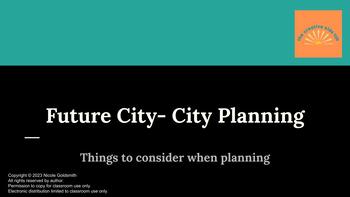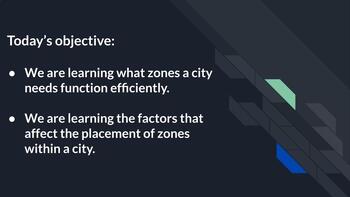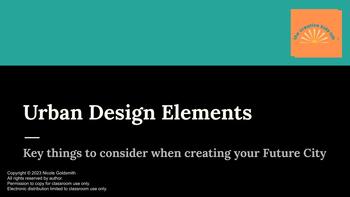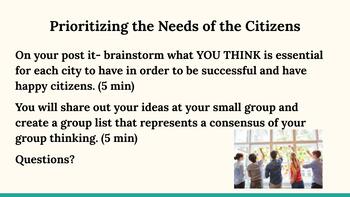Future City- City Planning & Engineering
The Creative Kids Lab
2 Followers
Grade Levels
6th - 8th, Homeschool
Subjects
Resource Type
Standards
CCSSRI.8.1
CCSSRST.6-8.2
CCSSRST.6-8.7
NGSSMS-ETS1-2
NGSSMS-ETS1-1
Formats Included
- Google Drive™ folder
Pages
45 total slides, 1 google form
The Creative Kids Lab
2 Followers

Made for Google Drive™
This resource can be used by students on Google Drive or Google Classroom. To access this resource, you’ll need to allow TPT to add it to your Google Drive. See our FAQ and Privacy Policy for more information.
Description
This is the ultimate starter guide for any teacher participating in the Future City Competition or a city planning/civil engineering unit for middle school-age children. As an educator that has participated in the Future City Competition for over 15 years, starting this project with your students can be so overwhelming. I put together 4 slide decks that are essential, foundation skills to know to be successful in the Future City Competition or any city planning/civil engineering unit of study. There is even a google form assessment on city zoning to assess what your students have learned included in this download. I have used these lessons with students in grades 6, 7, and 8.
Total Pages
45 total slides, 1 google form
Answer Key
N/A
Teaching Duration
N/A
Report this resource to TPT
Reported resources will be reviewed by our team. Report this resource to let us know if this resource violates TPT’s content guidelines.
Standards
to see state-specific standards (only available in the US).
CCSSRI.8.1
Cite the textual evidence that most strongly supports an analysis of what the text says explicitly as well as inferences drawn from the text.
CCSSRST.6-8.2
Determine the central ideas or conclusions of a text; provide an accurate summary of the text distinct from prior knowledge or opinions.
CCSSRST.6-8.7
Integrate quantitative or technical information expressed in words in a text with a version of that information expressed visually (e.g., in a flowchart, diagram, model, graph, or table).
NGSSMS-ETS1-2
Evaluate competing design solutions using a systematic process to determine how well they meet the criteria and constraints of the problem.
NGSSMS-ETS1-1
Define the criteria and constraints of a design problem with sufficient precision to ensure a successful solution, taking into account relevant scientific principles and potential impacts on people and the natural environment that may limit possible solutions.





